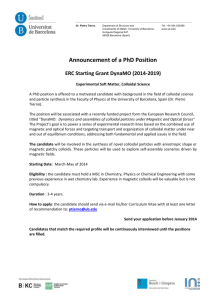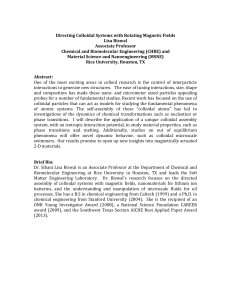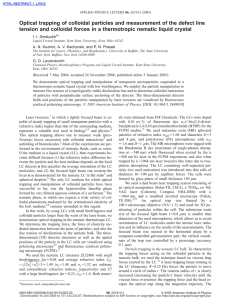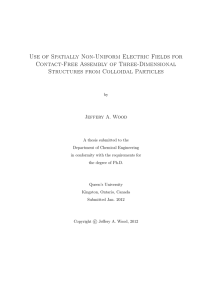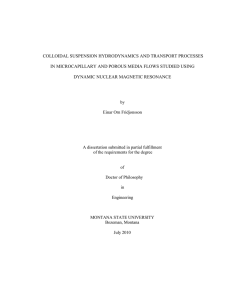Controlling Transport Using Surface Porosity in Colloidosomes Rachel Rosenberg
advertisement
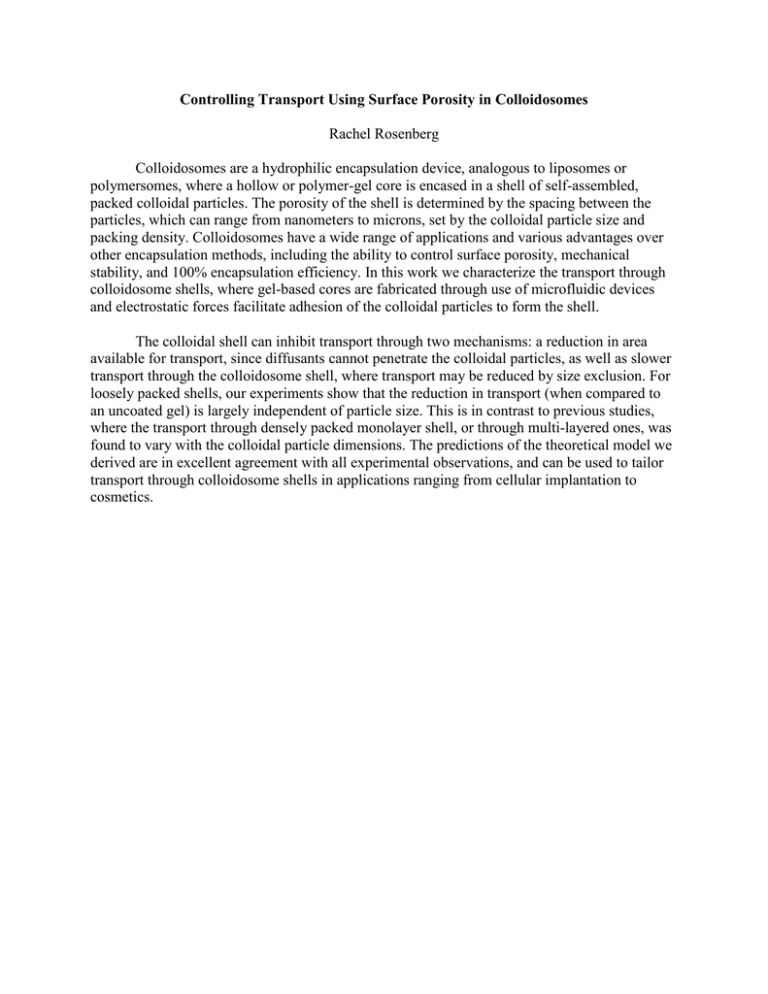
Controlling Transport Using Surface Porosity in Colloidosomes Rachel Rosenberg Colloidosomes are a hydrophilic encapsulation device, analogous to liposomes or polymersomes, where a hollow or polymer-gel core is encased in a shell of self-assembled, packed colloidal particles. The porosity of the shell is determined by the spacing between the particles, which can range from nanometers to microns, set by the colloidal particle size and packing density. Colloidosomes have a wide range of applications and various advantages over other encapsulation methods, including the ability to control surface porosity, mechanical stability, and 100% encapsulation efficiency. In this work we characterize the transport through colloidosome shells, where gel-based cores are fabricated through use of microfluidic devices and electrostatic forces facilitate adhesion of the colloidal particles to form the shell. The colloidal shell can inhibit transport through two mechanisms: a reduction in area available for transport, since diffusants cannot penetrate the colloidal particles, as well as slower transport through the colloidosome shell, where transport may be reduced by size exclusion. For loosely packed shells, our experiments show that the reduction in transport (when compared to an uncoated gel) is largely independent of particle size. This is in contrast to previous studies, where the transport through densely packed monolayer shell, or through multi-layered ones, was found to vary with the colloidal particle dimensions. The predictions of the theoretical model we derived are in excellent agreement with all experimental observations, and can be used to tailor transport through colloidosome shells in applications ranging from cellular implantation to cosmetics.

